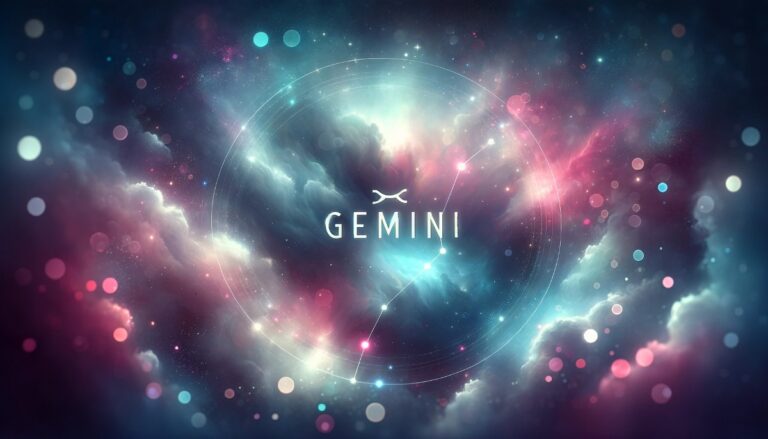Mastering ChatGPT: The Ultimate Formula for Optimal Responses
In the realm of Artificial Intelligence, proficient communication with large language models is pivotal.
ChatGPT, for instance, might provide general responses in some instances and delve deeper in others. Crucially, the caliber of its responses hinges on your prompt. Precise and well-structured prompts can significantly elevate the outcomes you receive from ChatGPT.
For those keen to optimize their interactions, consider this formula: Ideal Prompt = Task + Context + Exemplars + Personal + Format + Tone. While each component of this formula holds significance, they are arranged in a hierarchy of relevance. Let’s delve into this further.

Task
Engaging effectively with ChatGPT begins with setting a lucid task. At the heart of our formula, the task serves as a guiding beacon, leading ChatGPT to the desired outcome.
With a distinct and well-articulated task, ChatGPT can retrieve the most pertinent data from its expansive reservoir, yielding a superior response.
Here’s how you can adeptly set tasks for ChatGPT:
- Frame your prompt plainly, signaling your intent. For instance, rather than posing, “Do you know how to improve sleep?”, a more directive approach would be, “List several methods to enhance sleep quality.”
- Utilize action verbs such as “Explain,” “Compare,” “Summarize,” “Write,” “Provide,” or “List.” These verbs shape the expected response from ChatGPT.
- Emphasize structure. This allows ChatGPT to formulate concise answers. A refined version of an earlier prompt might read: “Enumerate the top 5 strategies to enhance sleep, detailing their pros and cons.”
- Precision is crucial. Steer clear of ambiguities. For instance, when requesting “List the 5 most impactful books ever penned,” it’s essential to clarify the nature of their impact – is it cultural, political, or technological?
- For multiple queries, segment them logically, placing each on its own line.
- Integrating suitable qualifiers sharpens the response. For instance, when seeking technical information, you could instruct ChatGPT to frame its answer for a non-technical audience.
Context
The inclusion of task context is paramount when formulating effective prompts for ChatGPT. Here’s why:
- Absent suitable context, ChatGPT might interpret your prompts variably, resulting in responses that may be ambiguous or overly generic.
- Offering specific context tailored to your situation lets ChatGPT craft answers better aligned with your requirements.
- For intricate tasks necessitating granular knowledge, supplying a comprehensive background empowers ChatGPT to manage these tasks more efficiently.
A case in point: I previously directed ChatGPT to create Midjourney instructions. But, considering ChatGPT’s training data only extends up to September 2021, it wasn’t familiar with “Midjourney.” The solution was to elucidate what Midjourney signifies, the nuances of writing prompts for it, and so on.
When introducing context, consider addressing these points:
- Your identity: Are you a student, teacher, engineer, or marketer? Clarifying your position offers ChatGPT a lens through which to view your inquiry.
- Your domain: Is your focus academia, business, or technology? Pinpointing this ensures ChatGPT’s responses are consistent with that sector’s practices and conventions.
- Your expertise: Are you navigating as a novice or speaking as a subject matter expert? This distinction helps tailor ChatGPT’s depth and lexicon in its response.
- Your background: What’s your foundational knowledge or skill set related to the topic? By revealing this, you can prevent ChatGPT from covering familiar terrain.
Having clarified these aspects, you’re well-prepared to weave the task’s context into your directives for ChatGPT. For instance:
As a computer science major who is writing a research paper for a machine learning course, I have basic knowledge of neural networks and some experience in Python programming. I need to summarize the main differences between supervised, unsupervised, and reinforcement learning algorithms. Please provide an overview of each approach in three short paragraphs.
Exemplars
Offering ChatGPT illustrative examples can significantly enhance clarity regarding your expectations. There are instances where, despite detailed prompts, ChatGPT might not deliver the desired output without illustrative precedents.
By referencing these examples, ChatGPT can decipher the intended sentence structure, format, stylistic nuances, and depth, helping it to produce more tailored responses. Such examples can convey intricate details without necessitating extensive verbiage.
For instance, when crafting a product description, presenting ChatGPT with exemplary descriptions from competitors can be beneficial. Drawing from these, ChatGPT can assimilate and replicate the style and structure typical of industry-standard product descriptions. Similarly, when drafting a resume, referencing standout templates can guide the desired output.
With high-quality examples, you can even reverse-generate a high-quality prompt template, check out one of my previous posts if you want to go deeper:
Persona
Establishing a distinct persona for ChatGPT is a pivotal approach, so much so that it has spurred the development of AI offerings with characterized personas, like Character.AI. Instituting a persona offers several advantages:
- It fosters a more organic and context-rich interaction with ChatGPT, akin to conversing with a genuine individual rather than a generic interface.
- ChatGPT can craft responses tailored to specific personas or characters. Imagine having a conversation with ChatGPT emulating Chaplin.
- By assigning a persona, you can influence ChatGPT’s tonality, diction, structural flow, and stylistic approach. Tasking ChatGPT with emulating a poet, for instance, will result in poetic prose.
- Instead of yielding broad, one-size-fits-all answers, you can narrow ChatGPT’s focus to specialized realms—such as medical, legal, and other expert sectors.
- The accuracy of ChatGPT’s responses can be augmented. For example, directing ChatGPT as a “renowned mathematician” while tackling mathematical queries is likely to produce more precise outcomes than a generic prompt.
While assigning roles is beneficial, it’s imperative to exercise discretion. There are circumstances where defining a persona may be unnecessary or even counterintuitive. Such scenarios include:
- When a straightforward question or task is presented, and there’s no requirement for a domain-specific assistant.
- When seeking a multi-faceted answer encompassing various viewpoints or fields. Here, specific roles might curtail ChatGPT’s breadth of response.
- When the context of the task has been elaborated upon and supplemented with ample examples, further persona assignment might become redundant or even hinder the process.
- When the chosen persona is ill-equipped knowledge-wise to address the query at hand.
Format
Determining the desired format in your directives to ChatGPT can be crucial, although it’s not always obligatory.
However, some tasks hinge profoundly on the specific format employed. To illustrate, in an earlier piece, I highlighted the process of crafting an appealing PDF using the HTML format.
A common practice is setting a desired output structure for ChatGPT. At times, you might be pressed for time, necessitating a concise response. However, especially with models like GPT-4, ChatGPT might default to offering extensive answers. In such cases, outlining the preferred length—be it in paragraphs, sentences, words, or even characters—becomes paramount. Alternatively, you can employ relative measures such as “brief,” “detailed,” or “comprehensive.”
The structural layout of ChatGPT’s responses bears significance too. While ChatGPT usually renders answers in a default Markdown format—comprising headers, subheaders, and bullet points—it doesn’t always. Therefore, if you have specific formatting preferences, it’s wise to convey them.
Tables present another format that might require explicit mention due to their visual data representation capabilities. Moreover, these tables can be transitioned to Excel or CSV for further utilization.
Moreover, with strategic guidance, ChatGPT can be coaxed into producing mind maps, various chart types, and more.
- How to Create Mind Map with ChatGPT and Claude: A Comprehensive Guide
- Charting the Future: How to Use ChatGPT to Draw Graphs and Charts
- ChatGPT Diagram Mastery: Coding-Free Methods Unleashed
The versatility of ChatGPT is evident in its capability to generate a plethora of formats, including JSON, CSV, XML, YAML, SVG, Checklists, among others.
Tone
Setting a tone for ChatGPT can be both subtle and impactful. Often, when designating roles or providing examples, a certain tone implicitly aligns with the context. However, in specific scenarios, clearly determining the tone is crucial:
- For consumer-oriented content, a conversational, affable tone would be ideal.
- Technical guidelines demand an authoritative, specialist voice.
- Workplace documents necessitate a formal and professional tone.
- Academic papers should be conveyed in an unbiased, scholarly tone.
- Emails or instant messages can benefit from a comforting, empathetic, or hearty, warm tone.
Guidance for shaping the tone includes:
- Taking into account the intended audience, understanding their cultural nuances, preferences, and expectations.
- Being meticulous in your tone descriptors. For instance, if a formal tone is desired, stipulate “avoid slang or colloquialisms.”
- Illustrate the desired tone by referencing familiar mediums, such as the demeanor of a talk show host or the cadence of a TED talk.
- If uncertain about the right tone, ChatGPT can be leveraged for suggestions!
Summary
Visualize the dynamic between ChatGPT and your prompts as akin to soil nurturing a seed. High-quality instructions, akin to superior seeds, yield fruitful results.
To enhance the caliber of ChatGPT’s responses, invest in refining your prompts. This exercise can simultaneously bolster your proficiency in querying ChatGPT.
For those pressed for time, seeking rapid optimization of their prompts, I offer a swift solution in my subsequent segment: 2 Ways to Instantly Optimize Your ChatGPT Prompt






